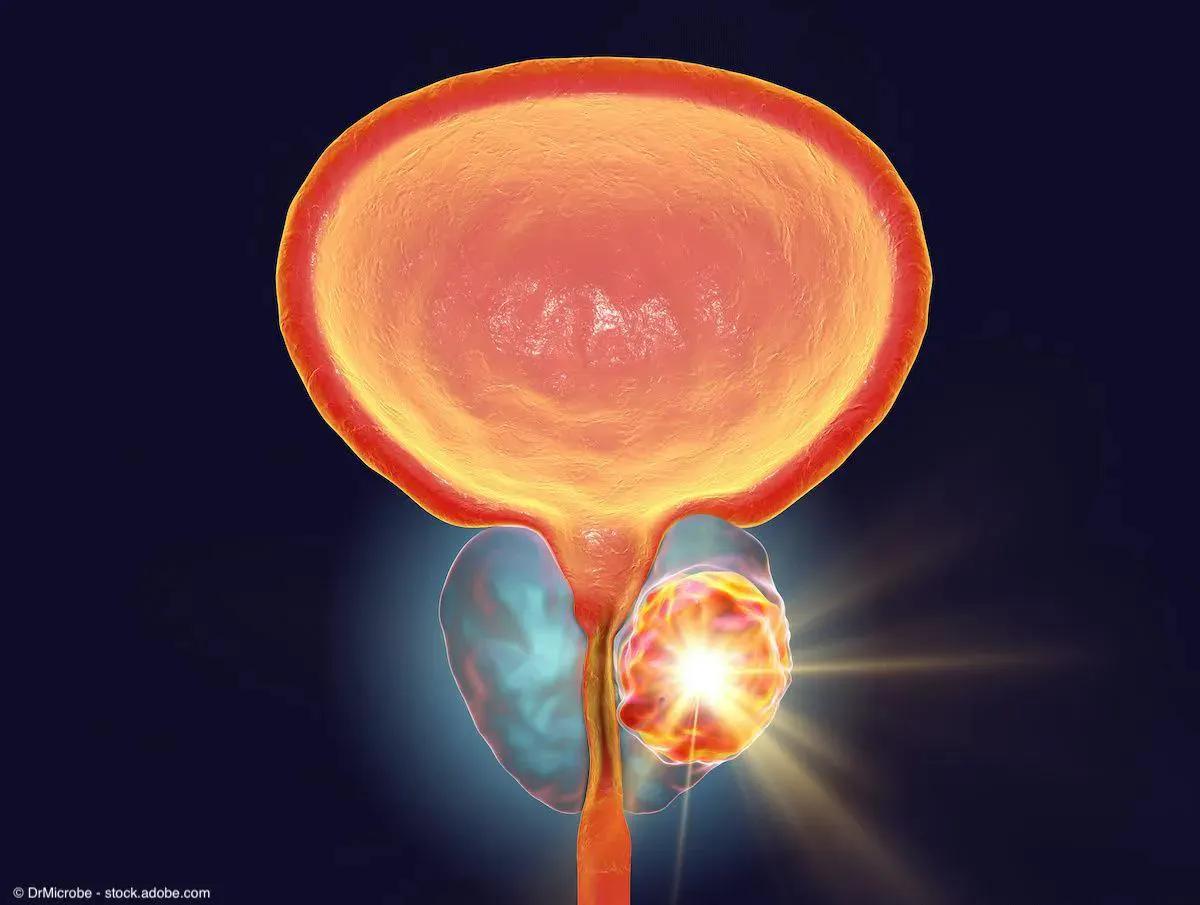News
Article
Addition of chemotherapy to ADT improves bPFS in prostate cancer
Author(s):
"Our clinical trial is the first to show a longer time to biochemical recurrence with chemotherapy plus standard hormone therapy for patients with locally advanced, high-risk prostate cancer," says Jiahua Pan, MD.
The addition of neoadjuvant docetaxel-based chemotherapy to hormonal therapy prior to radical prostatectomy significantly extended biochemical progression-free survival (bPFS) vs neoadjuvant hormonal therapy (NHT) alone in patients with high-risk, locally advanced prostate cancer, according to data recently published in the Journal of Urology.1
Patients who received neoadjuvant chemohormonal therapy demonstrated a 3-year bPFS rate of 29% compared with 9.5% among patients who received hormonal therapy alone.

"Our clinical trial is the first to show a longer time to biochemical recurrence with chemotherapy plus standard hormone therapy for patients with locally advanced, high-risk prostate cancer. The findings add new evidence to support the use of combined chemohormonal therapy for a group of patients at high risk of recurrent, progressive prostate cancer,” said study author Jiahua Pan, MD, of Shanghai Jiao Tong University, People's Republic of China, in a news release on the findings.2
Data showed that patients who received neoadjuvant chemohormonal therapy (NCHT) demonstrated a 3-year bPFS rate of 29% compared with 9.5% among patients who received NHT alone (P = .002). Further, at a median follow-up of 53 months, the median bPFS among the patients who received chemohormonal therapy was 17 months, vs 14 months among patients who received NHT alone.
The investigators also noted significant differences between the 2 arms regarding treatment-free survival (P = .004). At 5-year follow-up, 8.5% of patients in the NCHT cohort required no further prostate cancer treatment.
There were no significant differences found between the 2 treatment arms regarding pathological downstaging and minimal residual disease rates. Specifically, downstaging occurred in 65% (54) of patients who received chemohormonal therapy vs 48% (20) of patients who received hormonal therapy alone (P = .06). Minimal residual disease was found in 8.4% (7) of patients in the NCHT arm and 2.4% (1) of patients in the NHT arm. One patient in the NCHT arm was shown to have no residual tumor (pT0) in the radical prostatectomy specimen.
Additionally, the investigators found no significant differences in positive surgical margins between the 2 cohorts (P = .97).
Undetectable levels of prostate-specific antigen were achieved in 84% (70) of patients in the NCHT cohort and 71% (30) of patients in the NHT cohort (P = .09).
Both treatment arms demonstrated low complication and adverse events rates, with no 30-day mortality in either cohort.
In total, the study included 141 adult men with locally advanced prostate cancer with a high risk of metastases. Patients were randomly assigned 2:1 to receive either NCHT (n = 94) or NHT alone (n = 47). Those in the NCHT arm received 75 mg/m2 body surface area of docetaxel every 3 weeks and 5 mg oral prednisone twice daily plus androgen deprivation therapy for 6 cycles. Those in the NHT arm received androgen deprivation therapy alone for 24 weeks. Patients in both treatment arms underwent surgery (radical prostatectomy and extended lymph node dissection) following neoadjuvant treatment.
The primary end point for the study was bPFS at 3-year follow-up. A key secondary end point was pathological response, including pathological downstaging and minimal residual disease rates.
However, despite the positive findings, the study authors caution that further research is still needed.
They concluded,1 “Our study suggests that neoadjuvant docetaxel-based chemotherapy could bring significant improvement for patients, and longer follow-up is needed for more supportive evidence.”
References
1. Qian H, Chi C, Tricard T, et al. A prospective randomized trial of neoadjuvant chemohormonal therapy vs hormonal therapy in locally advanced prostate cancer treated by radical prostatectomy. J Urol. 2024 May;211(5):648-655. doi:10.1097/JU.0000000000003876
2. Adding chemotherapy to hormone therapy helps control locally advanced prostate cancer. News release. Wolters Kluwer Health: Lippincott. Published online and accessed April 16, 2024. https://www.newswise.com/articles/adding-chemotherapy-to-hormone-therapy-helps-control-locally-advanced-prostate-cancer
Newsletter
Stay current with the latest urology news and practice-changing insights — sign up now for the essential updates every urologist needs.
















